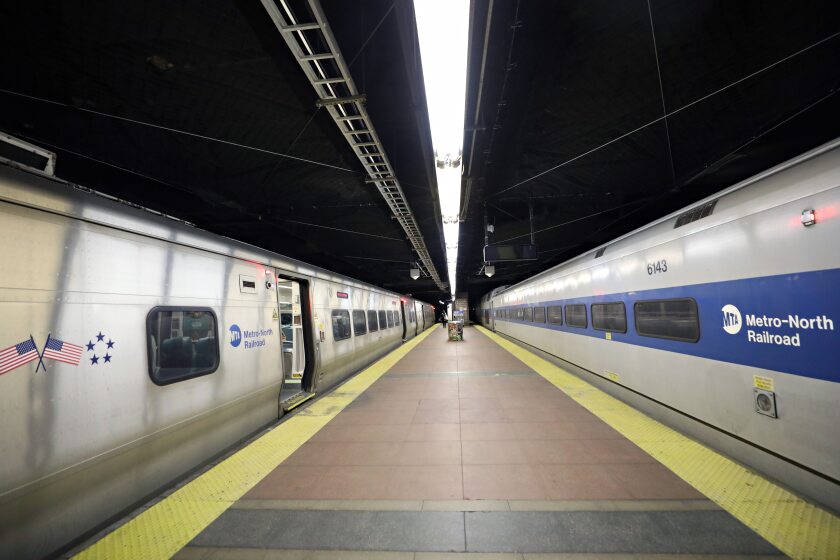In Brief:
Another one of America’s biggest transit agencies is joining the fare-capping fray.
On July 1, Los Angeles Metro will introduce a new fare policy whereby riders who pay for each ride as they go will pay no more per week than riders who buy an unlimited weekly pass. The policy keeps the price of a single-ride fare in place at $1.75. But under the new policy, no rider using a transit access pass (TAP card) will pay more than $5 a day or $18 a week to ride the bus. That means that if you ride the bus to and from work five days a week, any additional ride on the Metro system is virtually free.
The new policy is designed to address an inequity that persists in many transit agencies, where regular riders who can least afford the upfront cost of weekly or monthly passes end up paying more to ride the subway or bus.
“It’s the right thing to do,” says Kyle Holland, deputy executive officer for TAP technologies at L.A. Metro. “It’s equitable, at the core of it.”
Slow-Growing Trend
Portland was the first U.S. city to offer monthly fare-capping in 2017, though more than two dozen other agencies have followed suit since, according to the report. New York City's Metropolitan Transportation Authority (MTA), by far the biggest transit agency in the U.S., introduced fare-capping last year, with a program that upgrades riders to a weekly pass after they take 12 rides within a week, starting on Monday mornings. More than 168,000 riders hit that threshold in the first month of the program, according to a Gothamistreport.
TransitCenter, the New York-based advocacy group, pushed MTA to adopt fare-capping for years before it was implemented, says Hayley Richardson, the group’s director of communications. And it has continued pushing the system to adopt monthly fare-capping in addition to weekly fare-capping. More transit agencies are likely to adopt fare-capping as they make periodic upgrades to the latest fare payment technologies, Richardson says.
“Fare-capping is great; it definitely solves equity issues around fare payment,” she says. “But if people can’t afford the fare … That’s the million-dollar question that people haven’t figured out — other than making transit completely free, which of course has other costs.”
Converting Cash Riders
Holland says that L.A. Metro’s fare-capping program improves on New York’s by working on a rolling basis: The weekly counter begins whenever a rider makes their first swipe and runs for seven days, rather than starting over on Monday. That’s part of the agency’s attempts to make a smooth transition to TAP cards for riders who currently pay cash.
“We knew that our customers who were still paying cash were going to miss out on all the great benefits of fare capping,” Holland says. “And so all along the way, we’ve been doing a lot to convert as many cash riders over to TAP as possible.”
About 36 percent of Metro riders paid cash in the first six months of this year, according to the agency. The share of riders who use TAP cards is slowly ticking upward, but the agency still faces barriers in converting more riders to the card-based system. One survey showed that only about a fifth of riders knew that they could get a TAP card at one of more than 1,900 vendors around Los Angeles, Holland says. Many don’t know it’s also possible to reload TAP cards with cash at the fare box. Some riders say they can’t afford the $2 cost of a new TAP card itself, so Metro has sent agents to hand out free cards in areas with high rates of cash ridership, but even then found that many people still don’t use the card.
“So then we started giving away those same free TAP cards but loading it with $5 of stored value, like, ‘Hey, there’s free fare on here. Use it, get used to it, enjoy these benefits,’” Holland says.
Other Fare Changes Planned
The fare-capping policy is part of a broader set of changes L.A. Metro has planned for its fare system. Most significantly, the agency is retiring the half-price discounts on daily, weekly and monthly passes that have been offered since the beginning of last year. It’s also simplifying its discounted rates for seniors, riders with disabilities and students, with a 75-cent base fare for all riders in those categories.
L.A. Metro has had a somewhat better experience with maintaining and recovering riders during the pandemic compared to other parts of the state, like the Bay Area, where ridership plummeted and has hardly come back. In May, L.A. Metro had just over 70 percent of pre-pandemic ridership on weekdays, but nearly 90 percent of weekend ridership, according to the agency. While the fare-capping policy was designed to make the fare system more equitable, the agency hopes it makes it more attractive too, Holland says.
“Ridership patterns have been just sort of all over the place, but fare-capping is known to incentivize ridership,” she says. “That’s what we’re really keeping our fingers crossed for.”
Related Articles













